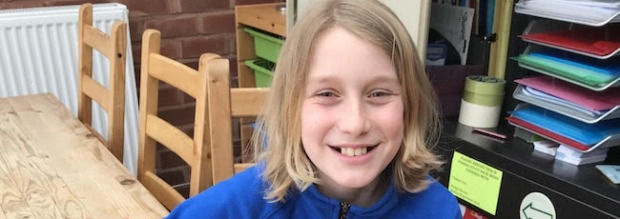
Suzanne, Homeschooler of a child with ADD and dyslexia
My son was diagnosed with ADD, auditory processing disorder, dyslexia and dysgraphia in early elementary school. At first we tried going to different tutoring centers, support groups, and special activities organized by our local community. But as I have a large family, it was difficult to get to all of these places and appointments, and it was expensive. I have a background in teaching and education so I decided to attend some of the programs myself, to see what kind of therapies they were doing and which approaches worked well for kids who have the same brain wiring as my son. I then went back and searched for tools online that would help him meet the same needs.
I signed up for a trial and discovered my son really liked the program and that it was helping him bring things together in terms of his reading, spelling and typing. Prior to using TTRS, my son had really struggled with writing things down. His brain would just get bogged down with the letter formation. Being able to type helped him use his strengths and gave him the kind of practice he needed to be more effective at his schoolwork. For example, my son really enjoys listening to audio books and reading along. This program took the same approach, as words were displayed on screen as they were read aloud.
In terms of writing, before TTRS my son could only verbally tell me what he wanted to say, but it took so much effort and time for him to write it out that he ended up doing really simple sentences, instead of more complex ones. He would dictate to me what he wanted to write. I’d write down a sentence or type it and then he would do the next sentence after me. This was really tedious for both of us and it didn’t seem to be that effective. Learning how to touch-type, combined with a secondary writing program we used from the Institute for Excellence in Writing, really helped push his skills ahead so he’s at grade-level now.
The course also made a difference for his note-taking skills, mainly thanks to the dictation exercises where you listen to words and type them out at the same time. I find kids with these kinds of learning difficulties tend to struggle with note-taking because they’re concentrating so hard on what they’re hearing and it takes a lot of effort to put it on paper. The dictation modules in TTRS were really important because he practiced hearing and typing at the same time and now he’s much faster and more accurate with his notes. In fact, we’re planning to have him do all of his note-taking on the computer when he starts high school in September.
I noticed he was a lot more confident with his spelling too. The typing helps with spelling because it connects muscle memory in the fingers, to imprint the correct letter sequence in the brain. I have my son in a co-op so two days out of the week he’s in classes with other kids. Most of what the upper middle-school grades do are group activities where they work in a team: someone does the writing, another child does the speaking etc. I spoke with his teachers ahead of the year and told them I wasn’t expecting him to want to be the scribe. I said he could do it if he wanted to but that I wouldn’t put pressure on him. Much to my surprise in December his teachers actually came to me and said he was asking to do the writing! I think part of this was his increased confidence in spelling thanks to TTRS.
Overall, I liked that this program incorporated listening, typing, spelling and a visual component. I also liked that it gave my son immediate feedback. We got exactly what we needed from using the course and are really positive about our experience with TTRS. I recommend it quite often to friends and family!



